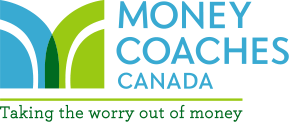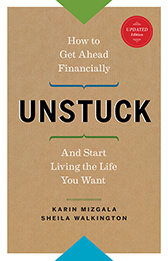By Sheila Walkington BBA, CFP®
 No matter what your financial circumstances, you’re probably at least a little bit freaked out by the impact that COVID-19 is having or could have on your day to day cash flow. Whether you are employed, self-employed or drawing income from your investments in retirement, COVID-19 doesn’t discriminate. It’s hitting us all where it hurts financially, myself included.
No matter what your financial circumstances, you’re probably at least a little bit freaked out by the impact that COVID-19 is having or could have on your day to day cash flow. Whether you are employed, self-employed or drawing income from your investments in retirement, COVID-19 doesn’t discriminate. It’s hitting us all where it hurts financially, myself included.
The antidote to fear is knowledge and a plan.
While you might dread the thought of tracking or tallying up all your expenses, there has never been a time when this is more critical. To regain some sense of control and financial stability, you need to be very clear with what your expenses are and how to prioritize if you are faced with a drop in income.
Knowing how much money you absolutely need to pay the bills and how much you need (or want) for some of the more discretionary expenses will help you see the full picture, and help you plan forward.
 Sheila’s COVID-19 Cash Flow Plan
Sheila’s COVID-19 Cash Flow Plan
I have always kept a very close eye on the expenses for my husband and I. Being self-employed and not always knowing what my monthly income will be, I felt comfort in at least knowing what I needed, bare minimum, to make ends meet. And on the flip side when money became more predictable and perhaps a bit more flush, knowing our numbers made it easier to plan for savings, debt reduction and some extras like travel.
In mid-March when it became clear that COVID-19 was going to shut down stores and businesses, one of the first things I did was revisit our numbers. Could we live on my husband’s income alone? Would we have to defer our mortgage to make ends meet? What could we cut if need be?
If I hadn’t worked through the financial implications of all these scenarios, my initial fear/panic would have been hard to soothe. The outcome of this planning exercise gave me a sense of relief that yes, if our income was severely reduced, we could still manage.
Take the 7 Stages of Financial Well-Being quiz, and we will help you assess your current financial situation and offer guidance toward healthy financial retirement.
Doing the Numbers
Use our Spending and Savings Plan worksheet to calculate and review your numbers. First determine what your spending and bills are, then use the 3rd column to tally and calculate your essential monthly spending and bills you need to plan for during these extraordinary times.
Here’s a run down of what I determined for our own expenses to give you an idea of how this exercise works:
Bills/Expenses we will not be incurring for now:
- House cleaner, cancelled. Savings $144/mo
- RSP savings – on hold for now. Savings $1,000/mo
- Bus pass. Husband now working from home. $80 savings
Total Monthly Savings: $1,224 (now being added to our emergency fund)
Savings Accounts we normally fund (and money we won’t be spending)
If you are familiar with our On Track Money Management System, and our “envelope” or “bank account” system, these are the amounts that we save to various accounts each month. Many of them could be completely eliminated if our incomes dropped.
- Family Fun. Eating at home only. No takeout, movies or entertainment. $200/mo
- Travel savings. All on hold! $475/mo. We even received some deposits back on spring and summer trips cancelled.
- Gas. We are not driving anywhere, except the grocery store that is 2 kms away. $80/mo
- Annual boy’s trip/weekends for hubby. $100/mo
- Gifts. $200/mo (sorry family, but a nice e-card may be in your inbox this year)
- Sheila’s spending money (clothes, hair, wine, take out coffee etc) $400/mo
- David’s spending money (clothes, hair, beer, take out coffees, etc) $400/mo
- Medical/Dental (chiro, massage, dental) $150/mo.
Total Savings: $2,005 (now being added to our emergency fund)
If Cash Flow gets really tight:
- Mortgage deferral (savings $2,347/mo)
- Monthly charitable donations: $63
- Fortis gas – $20 – can be deferred interest free for 3 months (but then payable over next 12 months)
- BC Hydro. $144/mo. (If either you or your spouse stop working due to COVID-19, you may be eligible for three months of bill credit based on average consumption)
- Defer BC Property taxes. In BC if you are 55 or older you can defer your annual property taxes. Hubby happens to qualify for this if need be. About $1,800/yr, so $150/mo.
Total monthly expenses we could defer (or reduce): $2,751. Most of these are not actual savings, only a deferral of payment, so eventually the amounts would have to be repaid (except the donations which I am reluctant to cancel at this point.)
Some discretionary expenses we have not deferred or cancelled, and likely won’t:
- My monthly yoga membership to Hot Yoga 101. They have been doing daily online Zoom classes, and they are awesome! I now have more time than ever to do yoga, all from the comfort of my own home.
- Art supplies. My husband David loves to paint, and so he put in an online order (we are still waiting!) for more supplies to keep him busy.
- We seem to be happy to give up beer and wine, but coffee has been deemed essential.
One Expense that has gone up:
- Groceries. Bulk shopping is expensive! We are trying to shop only every 10-14 days and each shop has been way more expensive than our normal grocery bill. But I will say we have enough oatmeal, pasta and cheese to last us for a few weeks. I am hoping we can eat from the “cupboards” for a while now before we do another big shop.
Having a very clear spending and savings plan for our family’s expenses made it really easy for me to see at a glance what adjustments we could make right away to reduce our bills and spending. For now, my husband and I are still on full salary (thank you, thank you!), but I feel better knowing that we have a plan to turn to if either our incomes are reduced significantly.
Read about how we’ve helped people just like you feel empowered and ready for the future.
Book a COVID-19 Cash Flow Consult below.





Thanks. This was helpful. However with such a large budget I was surprised how low their charitable giving was. I was anticipating 5-10% but it looked like .5
Thanks David. I am glad you found this post helpful. Being self-employed for well over 20 years now, I have learned to stay flexible with my cash flow and not to over do it on my monthly commitments. We support two charities personally with a small monthly donation (one being the local food bank as they need donations all year round). Karin and I also do a monthly donation to the YWCA through the business. But that doesn’t preclude us from doing annual or one-off donations throughout the year as well.
This doesn’t help if you have debt like lines of credit, credit card, car payments, loans etc. This is easy if you are just focused on regular everyday expenses like grocery, gas and utilities.
Hi Mich, Many of the banks, credit unions and even car companies are allowing clients to defer their payments up to 6 months. Some financial institutions are lowering interest rates on credit card debt. Reach out to your loan providers to see what support they will provide to you. It is important to discuss your personal situation with them directly rather than miss payments.
I was disappointed to see RSP savings paused. Unless you believe economic contraction is going to be L shaped without recovery in the next 5-10 years, it seems shortsighted to stop investing while most asset classes are priced at a discount vs 8 weeks ago. Especially because you have already redirected much of your other cash flow to your emergency fund.
Sure, there’s probably more downside ahead of us, but my continuing monthly contributions, you would be buying at the discounted prices every month. Even better, most people who make RSP contributions will expect a tax refund next spring, so if equities and other asset classes happen to continue downward, the refund can provide additional funds to invest in an RSP or TFSA.
Of course, if your RSP contributions would generally sit in cash or cash-like investments, none of this applies. But assuming you invest your RSP contributions, pausing them now seems to be missing the most lucrative part of dollar-cost averaging.
Yes, I was disappointed too. I too would love to be dollar cost averaging at this time. And I will. Cautiously. But sometimes money in the emergency fund is key, not to mention less stressful, when future cash flow is uncertain.
So judgmental, David.
Great article Sheila! For the most part I had already put our COVID financial plan in place, however your article reminded me to ask for prepaid refunds (i.e. campground for May long weekend and school bus fees for my daughter).
Thanks!
Hi Oliver, Glad you already have your COVID financial plan in place. Sounds like you have a good sense of your expenses as well. Good work!
What is this one: >> $200/mo (sorry family, but a nice e-card may be in your inbox this year)<<?
Thanks Cathy, yes, it was supposed to say Gifts. We have corrected that.
Surprised you simply cancelled your cleaning help to take all the savings. These people live on the bread line. We have stopped our cleaning lady ($160 per month) but are sending her 1/2 payments until she can return.
Good for you Graham! My house cleaner was through an online service and they never sent the same cleaner twice, so I wouldn’t have been able to pay the cleaner directly anyways.
Disappointed to see you cut off your cleaning lady, who might need that money….Only $144 a month too, not a big expense!
Thanks for your comment Sandra. My house cleaner was through an online service and they never sent the same cleaner twice, so I wouldn’t have been able to pay the cleaner directly anyways.
I like your way of thinking, I have good intentions of putting money away but somehow at the end of the month it isn’t there. I am a widow and own my own home. I am spending more on groceries, wine but less on clothing and dining out. Unfortunately my golf membership and other club memberships are payments I still have to make. This pandemic has given food for thought on rethinking what my priorities are in these over 60 years. Elaine
Yes, it is a good time to reflect on priorities and how we would like to spend our money going forward. I would recommend clarifying the things that are important to you and how much they might cost in the year. Then open up one or more free savings accounts to start saving the money you need. Allocate the money to each of your savings accounts at the beginning of the month so the money starts building in your savings accounts before you have a chance to spend it! Read more about our On Track Money Management System here (https://moneycoachescanada.ca/womens-financial-learning-centre/articles/the-budgeting-software-we-dont-recommend/)